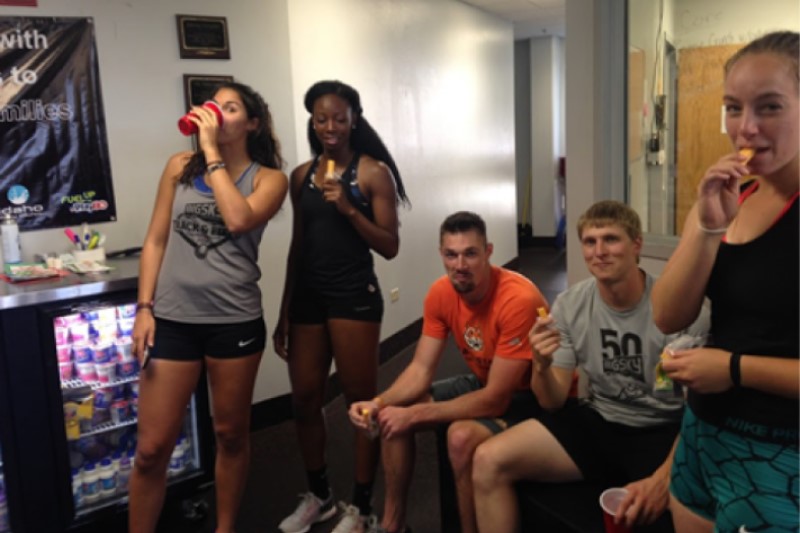Winning Habits | Strength Crushers | Smart Cooking | SCORE Team | Healthy Connections | Fueling Greatness
Pillars of Recovery
December 2019
By Bridgett Von Kahle, NDTR, CDM, CFPP
Graduate Student / Dietetic Intern
Many of us are familiar with the life of a professional athlete. The body needs frequent nourishment and intake of important nutrients in order to perform optimally. Although getting a well-rounded diet throughout the day is incredibly important, there’s another vital opportunity that many athletes don’t know they should be utilizing. This is the recovery period – the 30-minute to 1-hour time slot after training or intensive workout, when the body can most efficiently break down and utilize three core nutrition pillars.
Hydration
After an intensive workout, your body loses fluids and electrolytes.
After a workout, drink plenty of liquids supplemented with electrolytes to replace fluids lost and transport nutrients and waste.
Carbohydrate
During workouts, your body depletes stores of glycogen.
Immediately after the workout, eat healthy carbs to help replace glycogen, the most effective form of energy for muscles.
Protein
When you exercise, your muscles become fatigued.
Grab a protein snack, such as yogurt or cheese, to help rebuild and re-strengthen broken, loosened, and weakened muscle fibers.
It is important to take advantage of the recovery period and its optimal digestive production by taking in nutrient-dense snacks such as apples with peanut butter, chocolate milk, crackers, and hummus, or similar. If an athlete is having a hard time with a lack of post-workout appetite, liquid food options such as smoothies or protein shakes can deliver enough nutrients to make an impact. A bonus is that many of these kinds of helpful snacks can be kept on hand in the gym, in book bags or in the car.
Click here for more in-depth information on hydration, carbohydrate and protein utilization for exercise and recovery, check out Sports RD.





